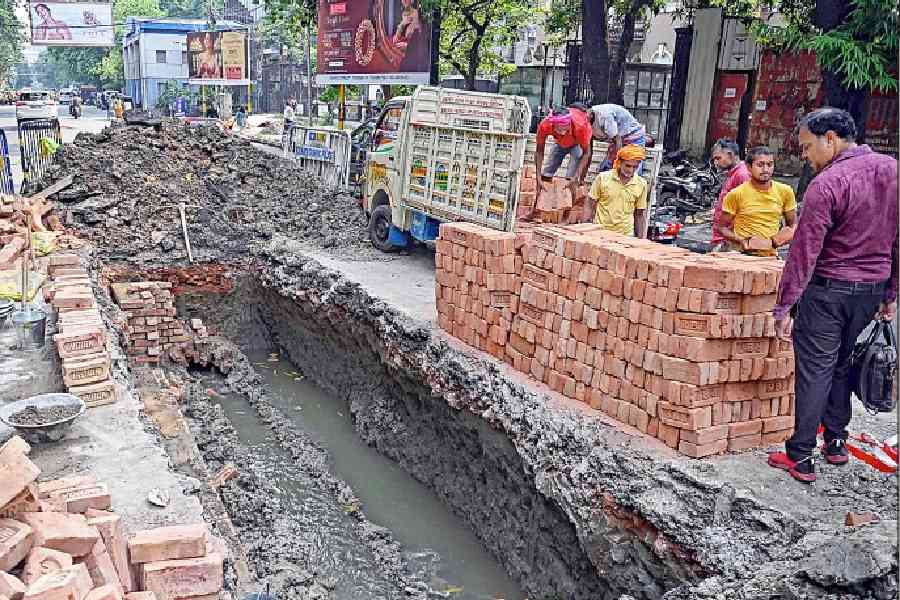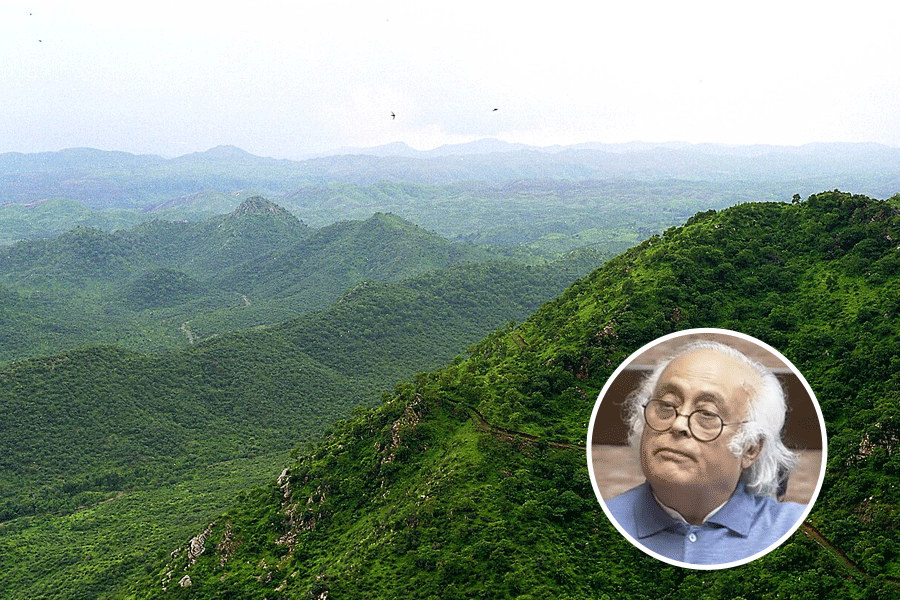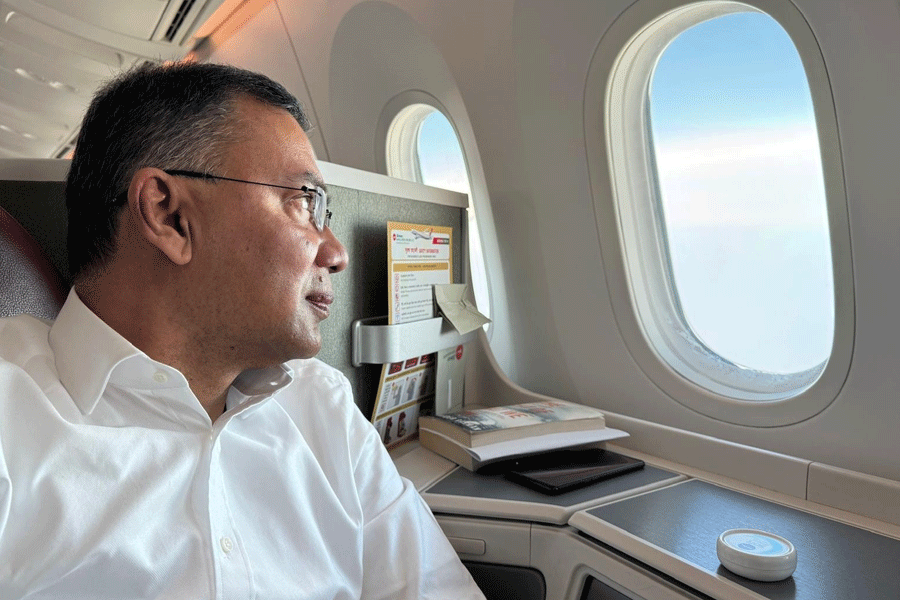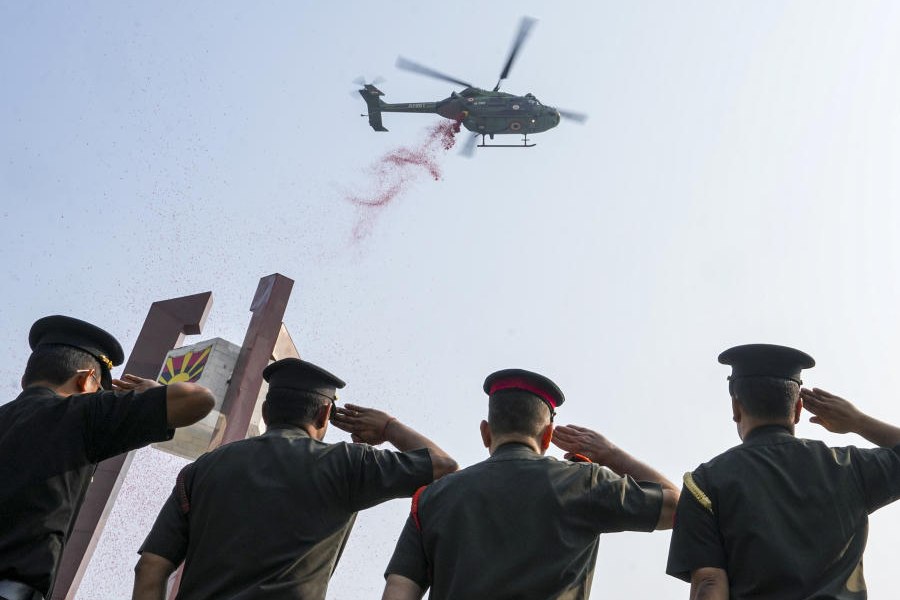A stretch of Camac Street has been cordoned off to repair a cave-in that followed the collapse of an underground brick sewer.
The Kolkata Municipal Corporation has dug a 6ft-wide and 20ft-long trench to repair the cave-in. Police cordoned off the area surrounding the trench.
A 2ft stretch of the road had caved in last week, but when KMC engineers dug up the stretch, they found that the cave-in had happened over a larger area.
“There is a 3m-diameter brick sewer line running under Camac Street. The top of the brick sewer line had collapsed in one stretch. That led to the cave-in,” said a KMC engineer.
As the top of the brick sewer line collapsed, the layers of soil under the road were moved from their compact position, triggering the cave-in.
The cordoned-off area, near Camac Street’s intersection with Ho Chi Minh Sarani, has left only two lanes open for vehicles. The block is slowing down traffic on the busy Camac Street during peak hours.
The repairs could take up to a month. The collapsed brick sewer will be fixed in the first fortnight. The layers underneath the road will be prepared in the next fortnight.
“We started the repairs on Thursday. Fixing the brick sewer will take about a fortnight,” said an official.
“Once the brick sewer is repaired, the layers of soil and aggregate will be prepared. That may take about a fortnight.”
The barricades will be removed once the layers below the road surface are ready.
“We will allow the movement of cars as that will help the freshly created layers to settle better. Then, after a few more days, we will pour the top bituminous coat on the stretch,” said the engineer.
Calcutta’s brick sewer system, built by the British between 1878 and 1888, consists of an 88km network of “man-entry” sewers.
Sewers with “man-entry” tunnels are large enough for a person to stand in them for maintenance. A separate network of narrower brick sewers runs under many other roads.
The brick sewer under Camac Street is among the smaller tunnels.
It carries sewage from Park Street and Camac Street to AJC Bose Road, from where the sewage flows to the Ballygunge drainage pumping station and finally to a canal.
Calcutta has a combined sewerage system where the same underground sewer lines transport the sewage as well as the rainwater during monsoon.










